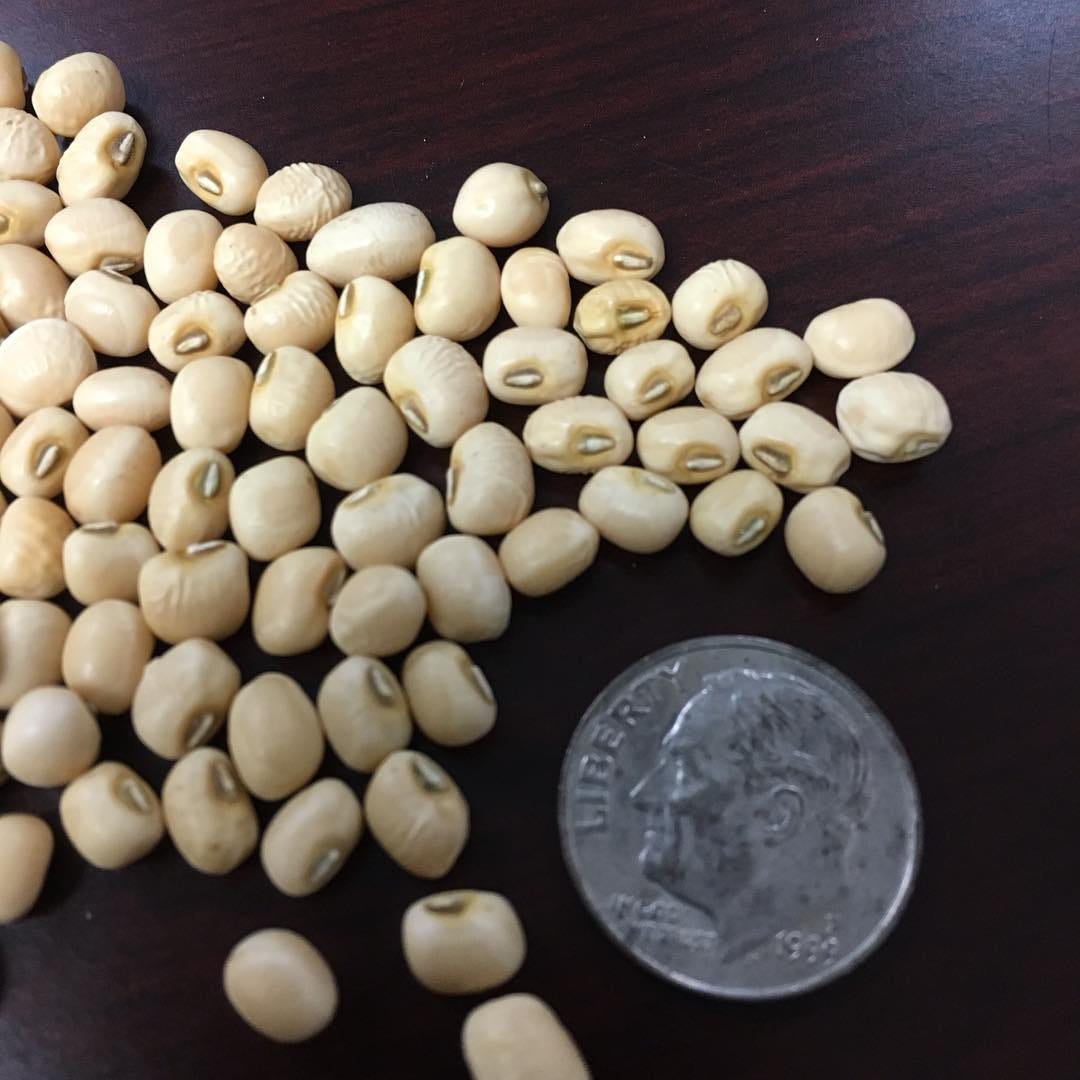Rice Pea
One of that class of white pea called “lady peas”, the rice pea for a century and a half has been reputed to be unexcelled in flavor. From the 1896 North Carolina Experimental Station Bulletin: “The table quality of this pea is considered superior to that of any other of the cowpea family” (342). Esteemed for its delicacy, its creamy texture, and its way of harmonizing with other flavors, the rice pea early attracted the attention of cooking professionals. From the Boston Cooking School Magazine 1914 : “There is a field pea called the rice pea, grown extensively in southern states, which is white, eye and all, with a slightly creamy tint, and it is even more delicate of flavor than the black-eyed peas; these are as delicate as early June peas, and they retain their natural color when cooked, and do not change the color of meat cooked with them. Perhaps the reason rice peas are not grown more generally is that they are not as hardy as black-eyed peas and other field peas. These delicately flavored rice peas, cooked with tender young pork, are far and away more appetizing than pork and beans, and almost or quite as nutritious. They are good, either cooked after they have become dry in the autumn and winter, or when young and tender in the late Spring and early Summer. Southern ladies often cook the tender young peas, pods and all, as snap beans are cooked. They are also good, creamed, either fresh in Spring or Summer, or when dry” (59). Hoppin’ John made using rice peas and Carolina Gold rice was considered the most refined form of that dish.
Description of the Plant: Semi recumbent vine, vigorous growing; small light green semi-globose leaf and stalk; trails at end of vines. Snow white blooms. Pea form—small white kidney verging on semitranslucent. Pod, small, yellow. Very late ripening. Peas are heavy yielding. Some points worth noting—there was nomenclature confusion, with some persons calling the small lady pea or lady finger pea a white rice pea. But the small lady is a crowder pea with a roundish shape, not the kidney shape of the Rice Pea. USDA PI 663025
Seed for the rice pea does circulate in the seed saving circles. But as field peas go, the rice pea is peculiarly sensitive to local conditions. If the soil is too acid, or the weather too dry, the young plants wilt and die. So during the restorations of the crop in the Lowcountry during the 2010s, it took four years of selecting seed from the few plants that thrived in order to get consistently productive fields. But once Glenn Roberts, Ben Dubbard and others began steady production, the pea became a culinary favorite. At the April 9th, 2017, meeting of the Carolina Gold Rice Foundation (the one that introduced Moruga Hill Rice and celebrated Francis Morean’s work), B. J. Dennis cooked some up curried West Indian style. Memorable. The peas lack the chalkiness and graininess of many of the black eyed and cream pea varieties.
While numbers of theories have arisen about why rice peas bear their name (there is actually a class of pulses that are designated rice peas/beans that includes green and red rice peas), the general thought is that they were co-crops with rice in Italy, West Africa, and America. They were a water tolerant field pea (most aren’t).





